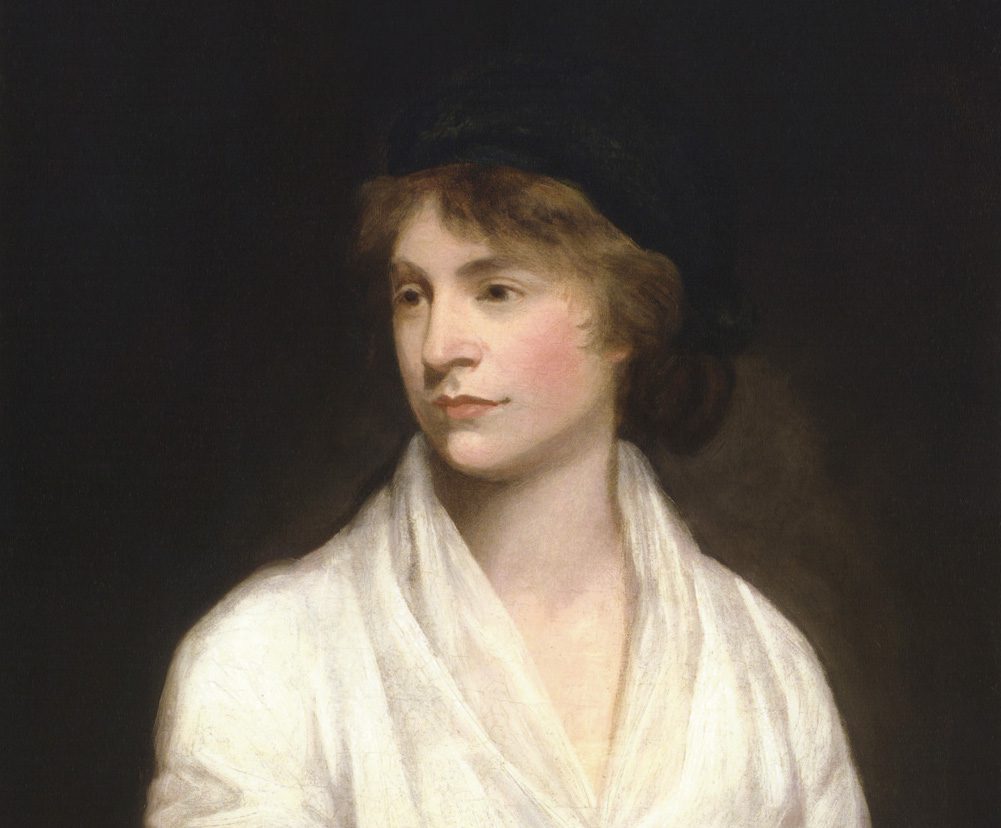Double-Minded Mary

Good morning. Mary Wollstonecraft is a feminist icon. She was also a woman of contradictions, Judith Hawley writes in a review of Sylvana Tomaselli’s new book on the writer and thinker: “On the one hand, she championed women’s capacity for reason in an age that largely treated them as sentimental playthings and decorative accessories for men. On the other, she fell passionately in love with the dashing and unscrupulous American businessman Gilbert Imlay. So fixated on him was she that she undertook a perilous journey to Scandinavia in an attempt to please him and then twice attempted suicide when he dumped her and their illegitimate daughter. In a similarly contrary manner, she proposed a ménage à trois with the Romantic painter Henry Fuseli and his wife, and later wed the radical philosopher William Godwin, though both of them were opposed to marriage. In some ways it is fitting, then, that Maggie Hambling’s much-derided statue in her honour at Newington Green in north London, where Wollstonecraft established a school for girls, gives off such mixed messages of awkward eroticism and shiny, hard magnificence. Wollstonecraft both flouted social norms and lived in defiance of some of her own public statements.”
In other news: David Coward writes about a “quietly shocking” account of wartime collaboration in Paris: “In June 1940, Henri Chamberlin, thirty-nine, a petty thief and con man, eluded his prison guards and returned to his old hunting ground, Paris. The capital was then being overrun by the Nazis, who found they lacked the manpower to police the land they had conquered. The answer was Hitler’s policy of ‘indigenous participation’. They recruited amenable natives like Chamberlin and gave them powers to force the population to submit. Also as a matter of policy, they began hoovering up French valuables and the same home-grown criminal fraternity brought them gold, art and gems. Chamberlin could not believe his luck. There was nothing now to stop him outdoing Little César or Scarface, his Hollywood idols: he was a fox in a chicken coop with no cops in sight.”
The life and work of Uriel Birnbaum: “Uriel Birnbaum . . . was born in Vienna in 1894 and died in Amersfoort, Holland in 1956. According to one scholar, Birnbaum produced ‘more than 6,000 poems, 130 essays, 30 plays, 10 short stories, 15 fairy tales, fragments of a longer epic poem, 20 chapters of a lost novel and 30 collections of illustrations.’ And yet, Birnbaum received little acclaim in his lifetime. Today he is all but unknown.”
Claire Selvin reviews a forthcoming M. C. Escher documentary: “Archival photographs of Escher’s youth, images of his works, and new animations based on his art are set to readings from his diaries, lectures, and letters, narrated with gusto by the actor Stephen Fry. Punctuated by commentary from two of Escher’s sons and many avid followers of his work, Fry’s recitations of the artist’s own words, if a bit theatrical and tedious at times, offer an entrancing look at how Escher became so fascinated by mathematics and the magical possibilities of patterns.”
David Pryce-Jones reviews Selina Hastings’s biography of Sybille Bedford: “In 1975, I was commissioned to interview Sybille Bedford, by then a leading light in the literary world. She lived in a small house in Chelsea. As I got out my notebook, she said, ‘I hope you are not going to ask me about my life.’ She spoke freely about her work, though. A Legacy, the novel she published in 1956, had become an instant classic. Evelyn Waugh had reviewed it in The Spectator with all the authority at his disposal: ‘We gratefully salute a new artist.’ In a letter to Nancy Mitford he further praised the novel: ‘What a brilliant plot!’ A Legacy was high art at a time when the Angry Young Man and the kitchen-sink style were low art or no art at all. We found that we had friends in common. One of them was Stanley Olson, a young American writer in the Henry James mode, and he appealed to Sybille because like her he was a good cook and a connoisseur of wine . . . A slight intonation, a purr, was the only clue that she had been born in Berlin in 1911, a subject of Kaiser Wilhelm.”
The pleasures of rural train museums: “You can be in the middle of absolutely nowhere and a railway museum can pop up.”
Cassandra Nelson reviews Benjamin B. Alexander’s poorly edited Good Things Out of Nazareth: The Uncollected Letters of Flannery O’Connor: “Insofar as books are windows to the soul, this one is quite a conundrum. O’Connor possesses one of the sharpest minds readers will ever encounter, and her dry humor and understated brilliance are at their best in her correspondence. The Habit of Being, an earlier and more substantial collection of O’Connor’s letters, edited by Sally Fitzgerald and published by Farrar, Straus and Giroux in 1979, is a treasure. But here her words have been arranged and edited so bizarrely and so sloppily that the overall effect of the book is to drive a careful reader mad.”
Photo: Castle Arenberg in the morning mist
Receive Prufrock in your inbox every weekday morning. Subscribe here.